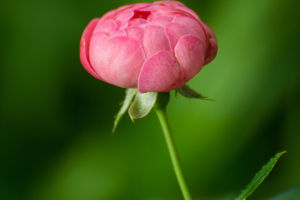Tulip, hailed as the herald of spring originates from the Central Asian steppes and has captivated gardening enthusiasts and flower collectors worldwide with its elegant posture and diverse colors.
Step into the world of tulips together!
1. Historical Legacy
Tulips were first introduced to Europe as plants in the 16th century, initially arriving in the Netherlands. Due to their enchanting appearance and rarity, they quickly sparked a frenzy in the Dutch flower market.
This period became known as the "Tulip Mania," during which people spared no expense to buy and collect tulips, sometimes valuing them higher than real estate. Despite the tulip bubble eventually bursting, tulips continue to be regarded as symbols of beauty, nobility, and purity deeply ingrained in Dutch culture and people's hearts.
2. Cultural Significance
In other cultures, tulips also carry various symbolic meanings. In Türkiye, tulips are seen as symbols of wealth and prosperity, while in the West, their language of flowers represents love and romance.
3. Habitat and Varietal Diversity
Tulips are perennial herbaceous plants belonging to the lily family, typically ranging from 10 to 70 centimeters in height.
Their flowers are bell-shaped or cup-shaped, with overlapping petals in a variety of colors including red, pink, yellow, purple, and white. When in bloom, tulips emit a subtle fragrance, imparting a refreshing sensation.
Tulips thrive in a relatively forgiving environment but prefer well-drained soil and ample sunlight. Different varieties of tulips exhibit significant differences in flower shape and color. Some have sword-shaped petals, others wave-like, and their colors range from deep and vibrant to soft and delicate, each uniquely appealing to different aesthetic preferences.
4. Planting
Tulips propagate through bulbs, typically planted in autumn, undergoing dormancy in winter, and blooming into beautiful flowers in spring. Proper soil selection and care are essential for ensuring robust growth and flowering.
Among gardening enthusiasts, tulip propagation methods also include bulb division and seed propagation, preserving the unique characteristics of tulip varieties and enabling broader sharing and collection of these precious flowers.
5. Modern Significance and Applications
Today, tulips are widely cultivated and applied as part of horticultural art.
They adorn not only gardens and courtyards but also serve as common elements in public flowerbeds and urban greenery. Their elegant appearance and diverse varieties make them a splendid addition to cityscapes and rural landscapes alike during the spring season.
Furthermore, due to their short flowering period, tulips are key elements in flower appreciation, photography, and even celebratory events. Their utilization in flower exhibitions and garden designs showcases horticulturalists' mastery of color coordination and spatial beautification.
In summary, tulips are not just beautiful flowers but also important symbols of cultural heritage and horticultural art. From the Netherlands to the world, their unique charm and diverse colors have played significant roles in people's lives, symbolizing the arrival of spring and embodying beauty and grace. Whether blooming in flowerbeds or praised in literature and art, tulips endure in people's hearts with their timeless elegance and profound cultural significance.


